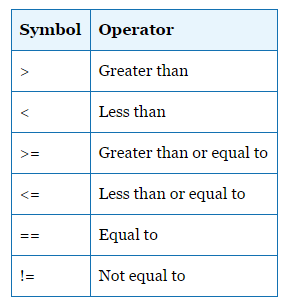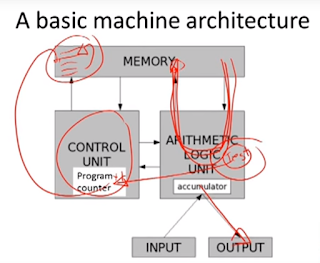Basic Machine Architecture includes: Memory: store/load instructions Arithmetic Logic Unit (ALU): perform primitive operations Control Unit: has a program counter to keep track of where things are and ask the ALU to perform operations. It is initially pointed to the first instruction Below are basic steps: Read in instruction, ie. interpreter translate codes into instruction steps and stores inside Memory Interpreter execute first instruction pointed by program counter in Control Unit First instruction: runs through ALU, perform primitive operations, then stores it back into Memory Program counter increases by 1, ie. go to the next instruction Every once in a while, one of the instruction is a Test. If Test is true, it will change the Program Counter which allows the machine to run to a different instruction (whether back or forward), ie. changing where we are in the code Reaches the point where we're done, then it will Output Turing showed that using 6 primit...



